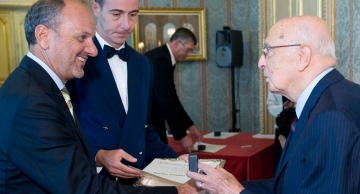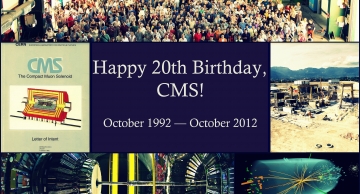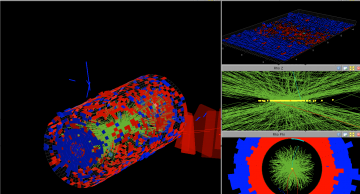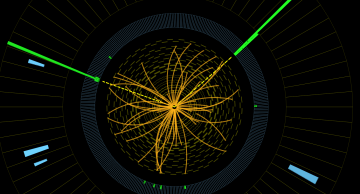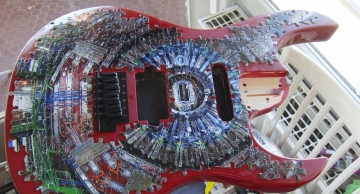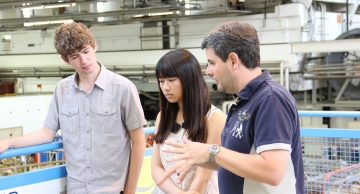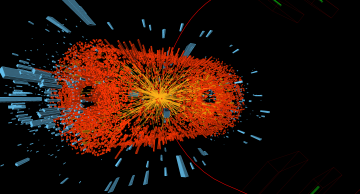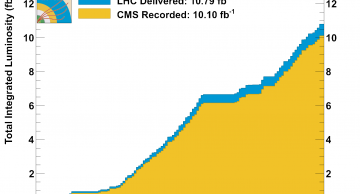Guido Tonelli, CMS Spokesperson 2010–2011, was made 'Commendatore' of the Order of Merit of the Italian Republlic (Commendatore Ordine al Merito della Repubblica Italiana) by Giorgio Napolitano, the President of the Italian Republic, for…
News
|
achintya |
Feature Article
The CMS Letter of Intent was completed 20 years ago this month.
We propose to build a general purpose detector designed to run at the highest luminosity at the LHC. The CMS (Compact Muon Solenoid) detector has been optimized for the search of the…
|
lucas |
Collaboration
You may view it or subscribe to it in a variety of ways, as well as to a number of sub-group calendars (Run Coordination, Upgrades, Publications, etc.), as follows:
Subscribe using your Google calendar
Subscribe using your Apple iCal calendar…
|
stenson |
Collaboration
The LHC circulates protons inside its beam-pipes not in a continuous stream but in several very closely packed bunches. In order to maximise the probability of the tiny protons colliding with one another, the LHC tries to pack as many protons as it…
|
brcure |
Collaboration
The magnet worked properly until it suffered two unexpected stops in August due to technical problems on the service infrastructure.
During the June Technical Stop, the CMS magnet was ramped down to zero tesla in order to allow a preventive…
|
achintya |
Collaboration
Here is a delightful poem written by Erich Harth, an Emeritus Professor from Syracuse University, in the wake of the discovery announcement from CMS and ATLAS.
A World without the Higgs
We eagerly await to learn
The latest thrilling news…
|
stoynev |
Collaboration
LUM POG twiki linked to the main Physics page!
|
zemleris |
Collaboration
The July 4th 2012 announcement was widely covered by press. For a small selection of some of the main stories see:
Archive of full articles (PDF files in CDS)
Archive of screenshots and photos of articles in newspapers, magazines, etc.
Below…
|
ptraczyk |
Collaboration
I have been a physicist working for CMS for about ten years now, and a guitarist for about twice as long. From time to time I have tried to somehow marry these two worlds, and when I became interested in guitar building I realised that I need to…
|
barneyd |
Collaboration
Every year CERN opens its doors to hundreds of high-school students who wish to get an in-depth look at what it is like to be a scientist or engineer at one of the world’s most prestigious research laboratories. Sharing their week-long experience…
|
lucas |
Physics
The Quark Matter 2012 conference, held in Washington DC from 13-18 August 2012, brings together experimental and theoretical experts in the area of heavy-ion physics. This week, the CMS collaboration is presenting many exciting new results using…
|
lucas |
Collaboration
CMS has just passed another major milestone, recording more than 10 inverse femtobarns of data at 8 TeV.
Despite higher pile-up creating more complicated events, CMS improved its running efficiency and now regularly achieves efficiencies in excess…

